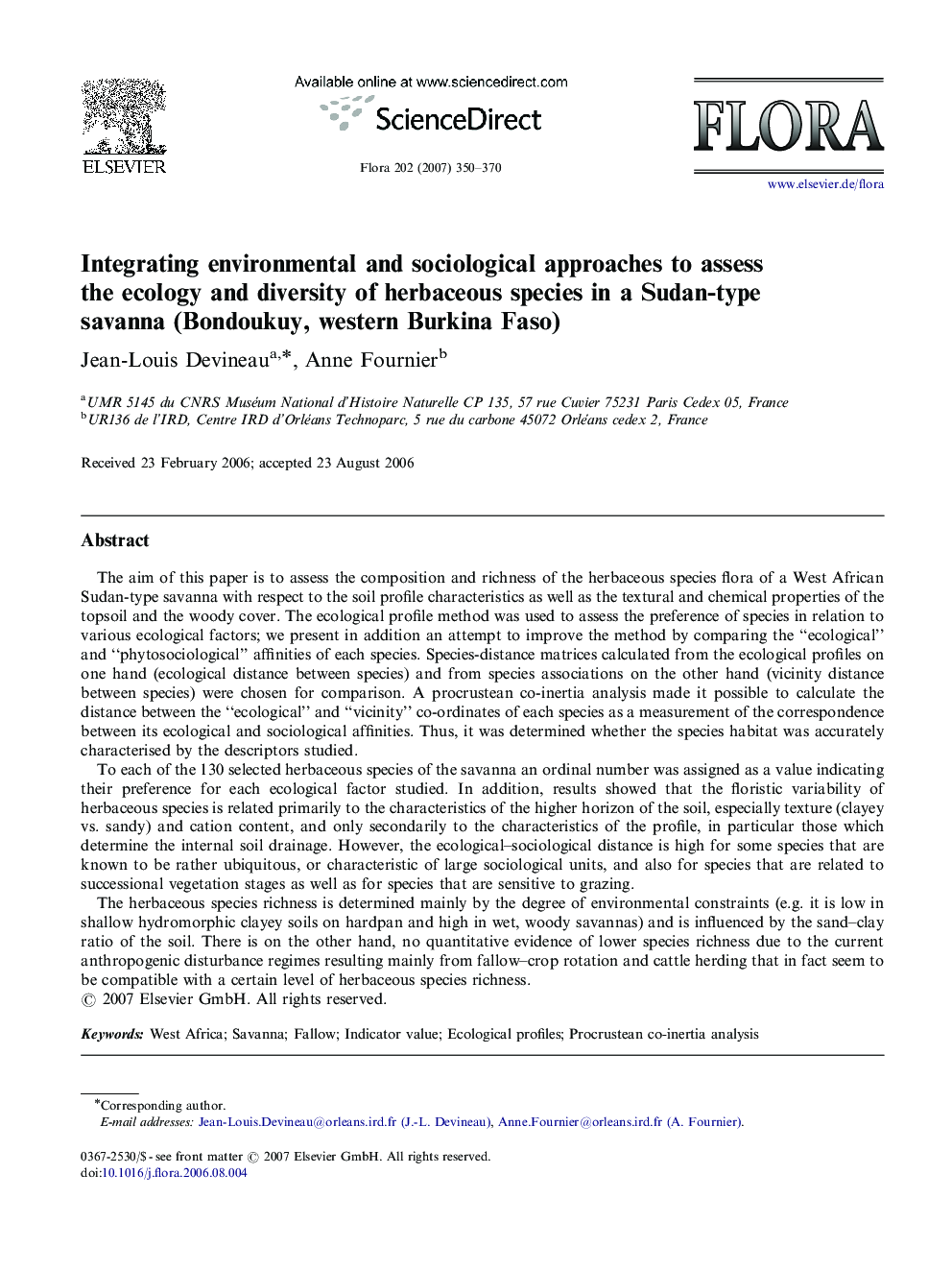| کد مقاله | کد نشریه | سال انتشار | مقاله انگلیسی | نسخه تمام متن |
|---|---|---|---|---|
| 2180256 | 1095123 | 2007 | 21 صفحه PDF | دانلود رایگان |

The aim of this paper is to assess the composition and richness of the herbaceous species flora of a West African Sudan-type savanna with respect to the soil profile characteristics as well as the textural and chemical properties of the topsoil and the woody cover. The ecological profile method was used to assess the preference of species in relation to various ecological factors; we present in addition an attempt to improve the method by comparing the “ecological” and “phytosociological” affinities of each species. Species-distance matrices calculated from the ecological profiles on one hand (ecological distance between species) and from species associations on the other hand (vicinity distance between species) were chosen for comparison. A procrustean co-inertia analysis made it possible to calculate the distance between the “ecological” and “vicinity” co-ordinates of each species as a measurement of the correspondence between its ecological and sociological affinities. Thus, it was determined whether the species habitat was accurately characterised by the descriptors studied.To each of the 130 selected herbaceous species of the savanna an ordinal number was assigned as a value indicating their preference for each ecological factor studied. In addition, results showed that the floristic variability of herbaceous species is related primarily to the characteristics of the higher horizon of the soil, especially texture (clayey vs. sandy) and cation content, and only secondarily to the characteristics of the profile, in particular those which determine the internal soil drainage. However, the ecological–sociological distance is high for some species that are known to be rather ubiquitous, or characteristic of large sociological units, and also for species that are related to successional vegetation stages as well as for species that are sensitive to grazing.The herbaceous species richness is determined mainly by the degree of environmental constraints (e.g. it is low in shallow hydromorphic clayey soils on hardpan and high in wet, woody savannas) and is influenced by the sand–clay ratio of the soil. There is on the other hand, no quantitative evidence of lower species richness due to the current anthropogenic disturbance regimes resulting mainly from fallow–crop rotation and cattle herding that in fact seem to be compatible with a certain level of herbaceous species richness.
Journal: Flora - Morphology, Distribution, Functional Ecology of Plants - Volume 202, Issue 5, 30 July 2007, Pages 350–370